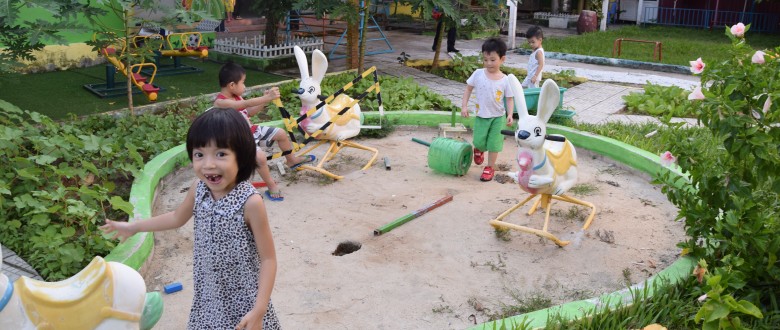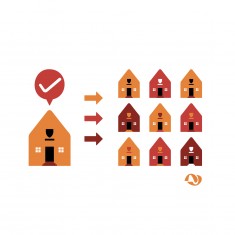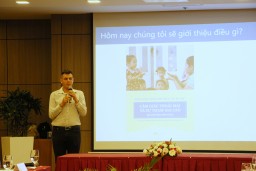
Cities are growing at a fast pace, as are the education challenges in urban contexts that inevitably accompany that growth. With our new CITIES project in Vietnam, VVOB maximises the positive potential of urbanisation by ensuring that all children in the city can benefit from quality early childhood education.
Diversity in urban areas
Today, 55 per cent of the world’s population lives in urban areas. By 2050 this proportion will likely have risen to 68 per cent. The vast majority of this increase will take place in Asia and Africa (UN DESA).
As the world continues to urbanise, sustainable and inclusive development depends increasingly on how governments and city administrations deal with this urban growth. Many countries, especially those in low-income and lower-middle-income countries, will be faced with challenges in meeting the needs of their growing populations. Providing housing, transport, health care, education etc. for growing numbers of urban dwellers could stretch government systems to their limits. Inclusive policies which take into account the need of the urban poor and the most vulnerable or marginalised groups will be crucial to make sure everybody benefits from this urban growth.

Mending the cracks
One of these ever-growing cities is the Vietnamese coastal city of Da Nang. While the government is working hard to provide basic services like early childhood education to all children in the city, rapid urban growth is exhausting public schools’ capacity. Preschool teachers/caregivers lack the capacity and methods to deal with these changes. They struggle to expose children to quality early learning experiences that help children connect with each other, the community and the environment and make them more resilient to urban stress. This results in children – and children from poor and migrant families in particular – falling through the cracks of quality education.
Together with the Da Nang Department of Education and Training (DOET) and the University of Da Nang, VVOB in Vietnam is now targeting these vulnerable urban populations. Through the CITIES project, VVOB and partners support preschool teachers and school leaders in the poor industrial zones of Da Nang to both identify and mitigate urban barriers to learning in the early years.
Identifying what constitutes these ‘urban barriers to learning’ is one of the objectives of CITIES. However, experiences from other contexts point towards issues like limited clean, green and safe spaces for playful learning; caregiver wellbeing and mental health issues; reduced parental wellbeing; longer travel and transit routes; ethnically-diverse student population due to migration; air and noise pollution; low levels of parental engagement in education due to work; new technologies replacing meaningful interactions with others, etc.
Keeping track of learners’ needs
The project is built around 2 pillars.
The first is a pilot project rolled out in eight urban schools in the district of Son Tra. The project strengthens the capacity of preschool teachers and school leaders to apply process-oriented child monitoring (POMS) and child-centred teaching approaches.
By applying the POMS methodology - which measures children’s wellbeing and involvement as indicators for learning – in their classrooms, preschool teachers gather information and can continuously respond to the developmental needs of their learners.
Read this interview with our colleague Trần Thị Kim Lý in Vietnam to find out more about POMS.
Using this information, teachers engage in individual and collective reflections and formulate action points to improve their teaching to fit the needs of the children. Specific emphasis is placed on supporting teachers to deal with the barriers to learning that are related to the urban context.
From pilot to prospect
The second pillar constitutes of disseminating the project outcomes of CITIES and integrating expertise on mitigating urban barriers in the national Vietnamese education system through the establishment of a community of practice (CoP). Participants of the CoP, consisting of policymakers, education practitioners and researchers, collectively produce a new body of knowledge on the specific barriers to learning and participation that children face in an urban context. The CoP supports the Vietnamese education system in reforming the early childhood system as a response to this changing context. Children and their families will have better chances to profit from the opportunities of an urban context.

In July, VVOB facilitated the first training of CITIES with participants from different levels of government and teachers and school leaders from the eight pilot schools.
The CITIES project is currently a 1-year pilot, but has the ambition to transform into a longer-term engagement to removing the urban barriers to learning for Vietnam’s cities youngest and most vulnerable residents.










